The Casado Costa Rica recipe is an iconic dish that showcases the heart of Costa Rican food culture. This delicious and fulfilling meal offers a delightful mix of flavors, colors, and textures that represent the simple yet rich culinary traditions of Costa Rica. Whether you’re a seasoned traveler, a food enthusiast, or someone just curious about Costa Rican food, this dish will capture your attention.
In this post, we’ll explore everything you need to know about the Casado Costa Rica recipe, from its history to its benefits, and even provide a step-by-step guide for you to recreate it at home. Along the way, we’ll also cover some tips and tricks, common mistakes to avoid, and where to find authentic Costa Rican food if you’re not in Costa Rica.
Before we dive into the details, let’s take a quick look at what makes Casado such an integral part of Costa Rican food culture. For a deeper dive into the history of Costa Rican cuisine, check out this article on Costa Rican food history.
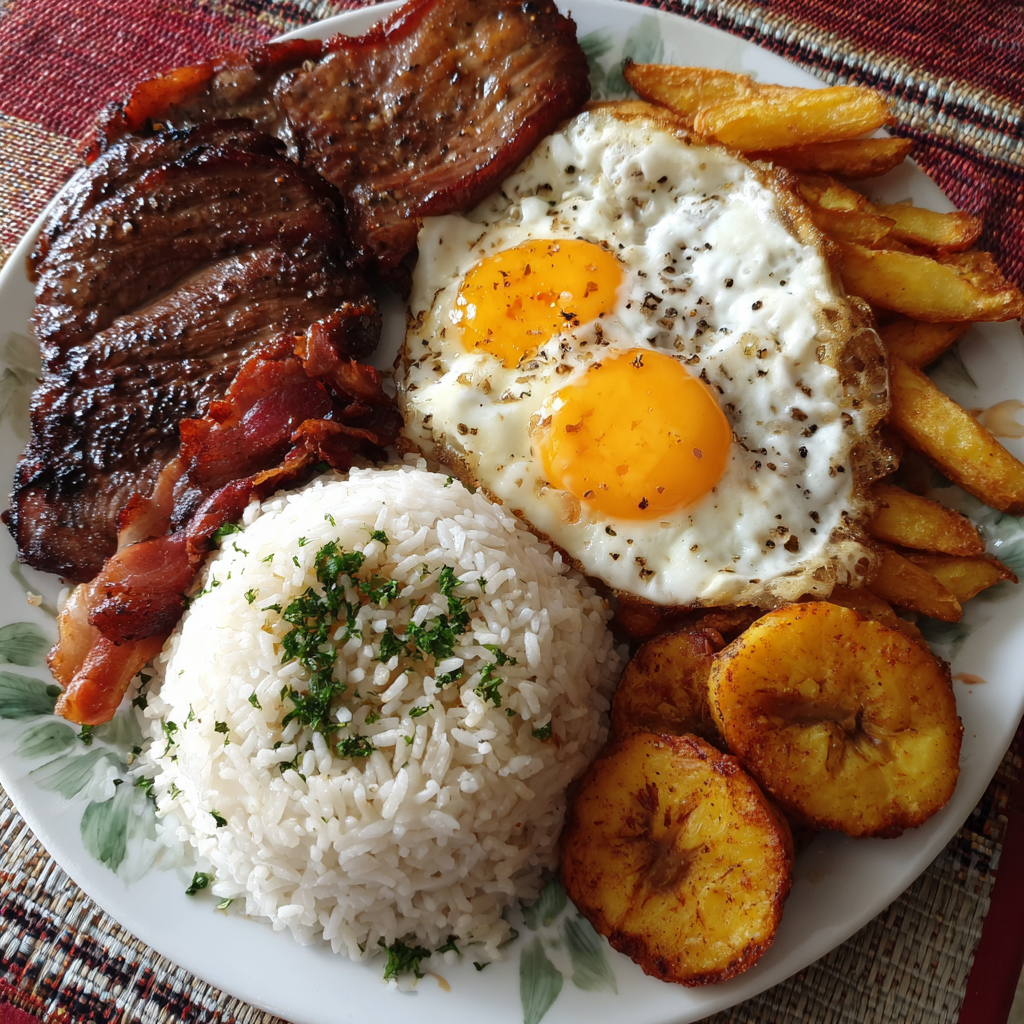
- What is the Casado Costa Rica Recipe?
- Benefits of the Casado Costa Rica Recipe
- How to Make or Use Casado Costa Rica Recipe
- Tips, Tricks, and Variations
- Common Mistakes to Avoid
- Where to Find or Use Casado Costa Rica Recipe
- The History Behind the Casado Costa Rica Recipe
- Why Rice and Beans Are Essential in the Casado Costa Rica Recipe
- Popular Variations of Casado Costa Rica Recipe
- Casado Costa Rica Recipe for Special Occasions
- FAQs: Casado Costa Rica Recipe
- Share Your Twist!
What is the Casado Costa Rica Recipe?
The Casado Costa Rica recipe is more than just a meal; it’s a representation of the Costa Rican way of life. Translated as “married man’s plate,” Casado consists of a well-balanced combination of rice, beans, meat, salad, and fried plantains. Each component of this meal has its significance in the daily life of Costa Ricans. The dish is a reflection of the country’s agricultural richness, where fresh and local ingredients come together to create a wholesome meal.
In its simplest form, the Casado Costa Rica recipe includes:
- Rice: A staple in Costa Rican food, often white rice or sometimes rice mixed with beans.
- Beans: Black beans are commonly used, but some regions may use red beans as well.
- Meat: The meat component typically consists of beef, chicken, or pork. Some variations even include fish.
- Salad: A fresh mix of lettuce, tomatoes, and other vegetables, lightly seasoned.
- Fried Plantains: Sweet plantains are fried to perfection, adding a savory-sweet touch.
Each bite of the Casado Costa Rica recipe brings together all the major food groups in perfect harmony, making it a truly satisfying and filling dish.
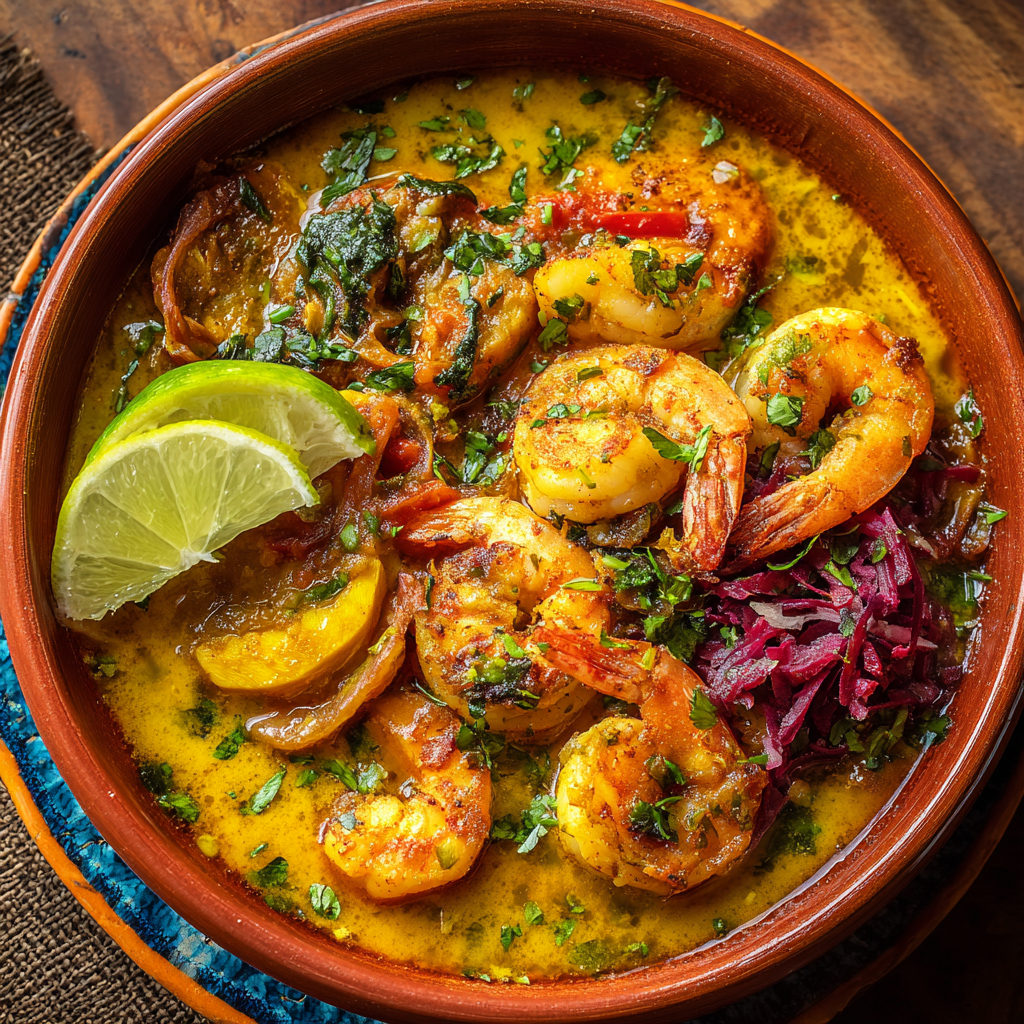
Benefits of the Casado Costa Rica Recipe
The Casado Costa Rica recipe isn’t just delicious; it’s also highly nutritious. Let’s look at the key benefits that make it a great choice for both locals and visitors.
- Nutrient-Rich: The combination of rice, beans, meat, and vegetables offers a well-rounded meal with essential nutrients like proteins, carbohydrates, and healthy fats.
- High in Fiber: The beans provide a significant amount of fiber, which aids in digestion and helps maintain a healthy gut.
- Packed with Vitamins: Fresh vegetables in the salad bring a variety of vitamins and minerals, making the dish not only tasty but also good for your health.
- Satisfying and Filling: Because the dish includes a balance of complex carbs, protein, and healthy fats, it keeps you full for longer, making it perfect for lunch or dinner.
If you’re looking for a balanced and healthy dish, the Casado Costa Rica recipe is a winner!
How to Make or Use Casado Costa Rica Recipe
Making a Casado Costa Rica recipe at home is easier than you might think. The key is to use fresh, local ingredients and prepare each component with care. Let’s break it down step by step:
Step-by-Step Guide
Ingredients:
- 1 cup of rice
- 1 cup of black beans (or red beans)
- 2 chicken breasts (or beef/pork, as per your preference)
- 1 plantain
- Fresh lettuce, tomatoes, cucumber (for the salad)
- Olive oil for frying
- Salt, pepper, garlic, and cilantro (for seasoning)
Instructions:
- Cook the Rice: Start by cooking your rice. You can make it plain or add a little bit of salt and garlic for extra flavor.
- Cook the Beans: In a separate pot, cook your beans until they are soft. If you’re using canned beans, simply warm them up.
- Prepare the Meat: Season your chicken breasts (or other meats) with salt, pepper, and garlic, then cook them in a pan until golden brown on both sides.
- Fry the Plantains: Slice the plantain into rounds, then fry them in a pan with a little oil until they are crispy and golden.
- Make the Salad: Toss your fresh vegetables with a bit of olive oil, salt, and pepper for a simple salad.
- Assemble the Casado: On a large plate, serve the rice, beans, meat, salad, and plantains, making sure to place everything neatly next to each other.
This simple Casado Costa Rica recipe comes together in no time and gives you a delicious and satisfying meal that captures the essence of Costa Rican food.
Tips, Tricks, and Variations
- Add a Fried Egg: For an even heartier dish, you can top your Casado Costa Rica recipe with a fried egg, which is a common variation in Costa Rica.
- Vegetarian Version: If you prefer a vegetarian version, simply replace the meat with more beans or grilled vegetables.
- Add Hot Sauce: Costa Ricans love adding hot sauce to their Casado, so don’t forget to have a bottle on hand for an extra kick.
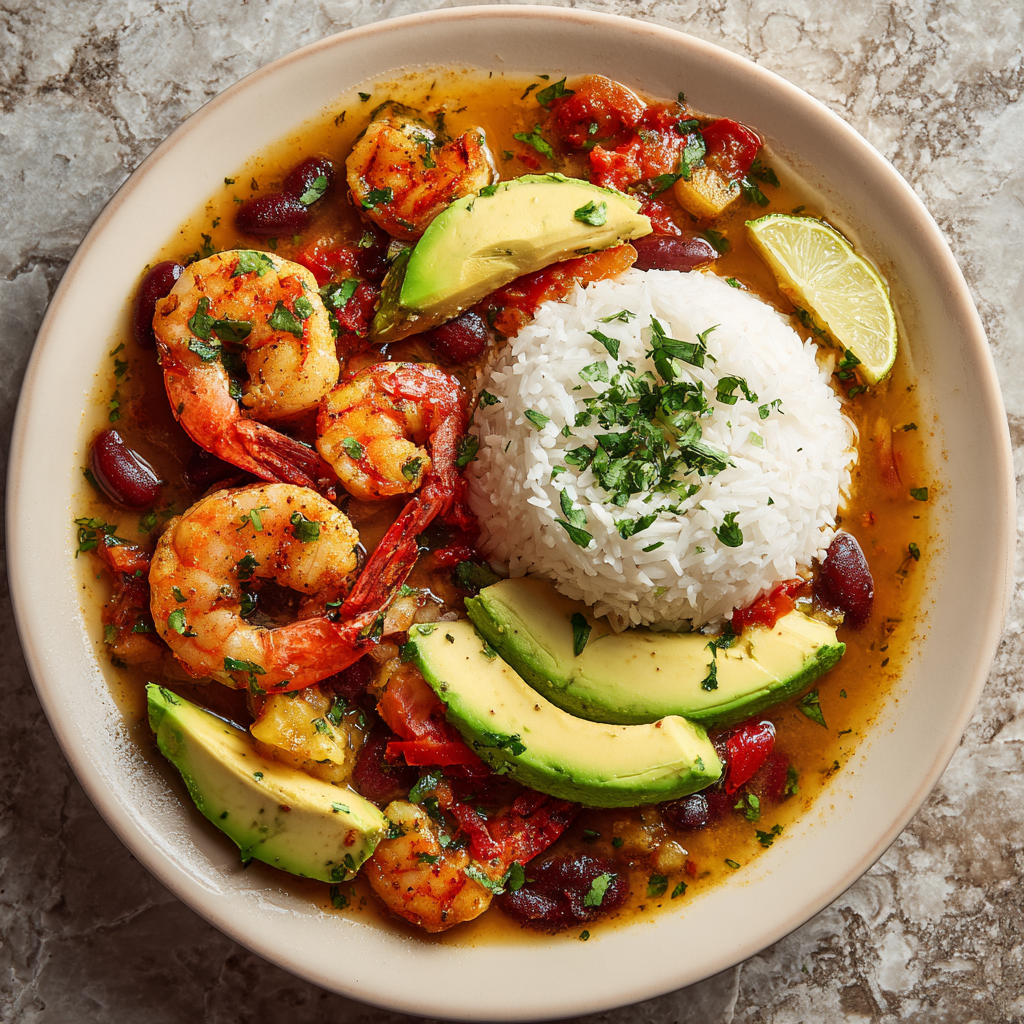
Common Mistakes to Avoid
- Overcooking the Rice: Make sure your rice is fluffy and not overcooked. Overcooked rice can ruin the texture of the dish.
- Underseasoning the Meat: The meat should be flavorful, so don’t skip on seasoning. Garlic, salt, and pepper are essential.
- Soggy Plantains: Be careful not to overcook the plantains. They should be crispy on the outside and soft on the inside.
Where to Find or Use Casado Costa Rica Recipe
If you’re visiting Costa Rica and want to try an authentic Casado Costa Rica recipe, you can find it in most local restaurants or sodas (small eateries). Many places will serve Casado with a variety of meats or even seafood, so you can try different versions.
For those living outside of Costa Rica, some international supermarkets carry the ingredients needed for the Casado Costa Rica recipe, especially the rice, beans, and plantains.
The History Behind the Casado Costa Rica Recipe
The Casado Costa Rica recipe has deep roots in the everyday life of Costa Ricans. Historically, the dish is said to have originated as a lunch for working men, commonly referred to as “married men,” hence the name Casado, which translates to “married.” It was a meal meant to keep them full and satisfied during the long working hours in fields, farms, and small towns.
Over time, it became a staple in Costa Rican food culture, often appearing on the menu of local sodas (small family-owned restaurants). The beauty of Casado lies in its simplicity, allowing it to be made with readily available ingredients while still providing a complete, nourishing meal.
The dish has transcended beyond just a working-class lunch. Today, it is enjoyed by families, tourists, and food lovers from all walks of life, cementing itself as one of the defining dishes in Costa Rican food culture.
Why Rice and Beans Are Essential in the Casado Costa Rica Recipe
Rice and beans are the backbone of many traditional Costa Rican meals. But why are they so essential in the Casado Costa Rica recipe? Let’s take a closer look at these two staple ingredients.
- Rice: Rice is a symbol of Costa Rican food culture, and it’s often served with nearly every meal. Costa Ricans tend to prepare it in various ways, from simple steamed rice to arroz con pollo (rice with chicken). The key to good rice in the Casado is that it should be fluffy and lightly seasoned to complement the other ingredients without overpowering them.
- Beans: Beans, particularly black beans, are another fundamental element in Costa Rican food. Rich in fiber and protein, beans are not just an essential part of the diet but also represent the agricultural heart of Costa Rica. Black beans are most commonly used in Casado, but variations can include red beans depending on the region.
Both rice and beans offer a wholesome, nutritious base for the meal, helping to balance the richness of the meat and the lightness of the salad. The combination of the two provides an ideal nutritional profile of carbs, protein, and fiber.
Popular Variations of Casado Costa Rica Recipe
Though the classic Casado Costa Rica recipe involves rice, beans, meat, plantains, and salad, there are many variations depending on personal preference and regional influences. Let’s explore some of the different ways this dish can be customized:
- Vegetarian Casado: For vegetarians, a Casado can be easily modified by skipping the meat and replacing it with more beans or grilled vegetables. Adding sautéed mushrooms or tofu can enhance the protein content while keeping the meal light and flavorful.
- Fish Casado: While beef, chicken, and pork are the most common proteins in Casado, in coastal areas, fish is often used. A grilled or fried fish fillet, such as tilapia or snapper, can be added to the dish, providing a lighter yet equally delicious option.
- Rice Variations: Instead of plain white rice, some Costa Ricans opt for arroz con camarones (rice with shrimp) or arroz con pollo (rice with chicken), which adds extra flavor to the rice component. For a more traditional twist, you can also make your rice with a bit of cilantro and garlic for an aromatic touch.
- Adding Avocado: A slice of fresh avocado can be added to the plate for extra creaminess and flavor. This addition is often seen in the southern regions of Costa Rica, where avocados are plentiful.
- Salsa Lizano: If you want to add that authentic Costa Rican flavor, drizzle some Salsa Lizano over your Casado. This tangy, slightly sweet sauce is a beloved Costa Rican condiment that enhances the beans and rice, making the dish even more delicious.

Casado Costa Rica Recipe for Special Occasions
While Casado is typically a meal for everyday occasions, it can also be dressed up for more festive events. Here are a few ways to elevate the dish for special occasions:
- Holiday Casado: During Christmas or Easter, Casado can be made more luxurious by using premium cuts of meat, such as steak or roast chicken, and pairing them with special side dishes like yuca (cassava) or tamales.
- Casado with Fresh Juices: For a more festive feel, serve Casado with fresh tropical fruit juices such as guava, papaya, or mango. These juices complement the savory flavors of the dish and provide a refreshing contrast to the heat and spices.
- BBQ Casado: In some Costa Rican regions, the meat in Casado might be grilled over an open flame, giving it a smoky flavor. This variation can be perfect for barbecues or outdoor gatherings.
- Garnish with Cilantro and Lime: Adding a sprinkle of fresh cilantro and a squeeze of lime juice over the dish just before serving can bring out the flavors and make it even more appealing.
Casado as a Reflection of Costa Rican Culture
In a broader sense, the Casado Costa Rica recipe is a reflection of Costa Rican culture itself: simple, unpretentious, yet satisfying. It emphasizes balance and harmony in food, just as Costa Rican society values peace and balance in life.
The dish is a symbol of community whether it’s enjoyed by a family at home or served in a bustling soda, Casado is meant to be shared, savored, and enjoyed with others. It embodies the laid-back yet hardworking spirit of the Costa Rican people, offering sustenance and joy in equal measure.
Costa Rica’s “Pura Vida” motto meaning “pure life” or “simple life” resonates through dishes like Casado, where everything comes together in a simple yet fulfilling way, nourishing both the body and the soul.
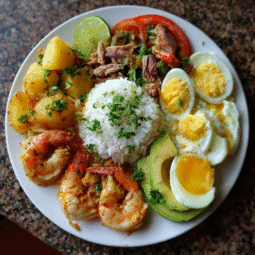
Casado – Traditional Costa Rican Dish
Equipment
- Medium pot (for rice)
- Pan or grill (for frying or grilling meat)
- Frying pan (for plantains)
- Knife and cutting board (for chopping salad and slicing plantains)
- Bowl (for salad)
Ingredients
- 1 cup Rice
- 1 cup Black beans cooked, or canned
- 1-2 pieces Chicken beef, or pork (your choice of protein)
- 2 Plantains peeled and sliced
- Salad: Cabbage tomato, cucumber
- Tortillas optional, 1-2
- Salsa Lizano optional, for extra flavor
- Olive oil or vegetable oil for frying
- Salt pepper, and optional spices for seasoning
Instructions
- Cook the Rice & Beans: Cook 1 cup of rice with 2 cups of water until tender. Heat black beans in a pot (or use canned beans).

- Prepare the Protein: Grill or fry your choice of protein (chicken, beef, or pork). Season and cook until fully done.

- Fry the Plantains & Make Salad: Slice the plantains and fry them until golden. For the salad, dice tomatoes, cucumbers, and shred cabbage. Toss them together with salt, pepper, and lime juice.

- Assemble & Serve: On a plate, arrange rice, beans, protein, fried plantains, and salad. Optionally, add a tortilla or drizzle Salsa Lizano on top for added flavor.

Notes
- Casado is very customizable. You can choose the protein based on preference, and avocado or a fried egg can be added for extra richness.
- Salsa Lizano is commonly used in Costa Rica to enhance the flavor, but it’s optional.
- This dish is typically served with a refreshing drink, such as agua dulce or fruit juice.

Final Thoughts on Casado Costa Rica Recipe
The Casado Costa Rica recipe is more than just a meal it’s an experience. Whether you’re trying it for the first time or recreating it at home, the balance of flavors, the freshness of the ingredients, and the cultural significance of the dish make it a truly special part of Costa Rican food heritage.
If you’re looking to try authentic Costa Rican food, there’s no better place to start than with a plate of Casado. It encapsulates everything that makes Costa Rican cuisine unique simple, fresh, and comforting.
So, next time you’re in the mood for something hearty and flavorful, remember the Casado Costa Rica recipe. It’s a meal that can transport you to the heart of Costa Rica, no matter where you are.
FAQs: Casado Costa Rica Recipe
What is Casado?
Casado is a traditional Costa Rican dish consisting of rice, black beans, plantains, a protein (like chicken, beef, or pork), and a fresh salad.
Can I use any protein for Casado?
Yes! While chicken, beef, and pork are the most common choices, you can also use fish, shrimp, or plant-based proteins like tofu for a vegetarian version.
What is Salsa Lizano?
Salsa Lizano is a tangy Costa Rican sauce often used in Casado to enhance the flavor of rice, beans, and meats. It’s a staple in Costa Rican cooking.
Can I make Casado in advance?
Yes! You can prepare the rice, beans, and protein ahead of time, but it’s best to fry the plantains and assemble the dish just before serving for the best texture and flavor.
Share Your Twist!
Casado is a versatile dish, and it’s always fun to experiment with your own unique take on this Costa Rican classic. Here are some ideas to make it your own:
- Change the Protein: While chicken, beef, or pork are traditional, try adding grilled fish, shrimp, or even a plant-based protein like tofu for a vegetarian twist.
- Add a Different Salad: Get creative with the salad by adding avocado, radishes, or even roasted vegetables for an extra layer of flavor.
- Spice It Up: If you love spice, drizzle some hot sauce or add chopped jalapeños to the salad for a kick.
- Try a New Side: Alongside the rice and beans, consider adding a side of fried yuca or a corn-based dish like tamales for variety.
- Sweeten the Plantains: Add a dash of cinnamon and brown sugar to your fried plantains for a sweeter twist.

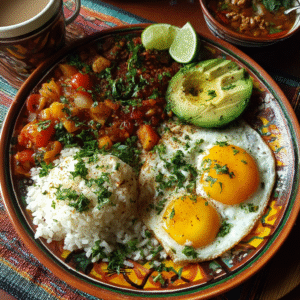
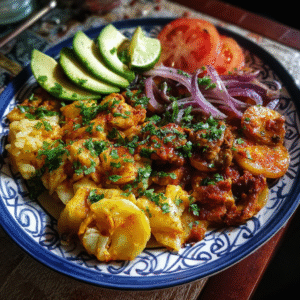
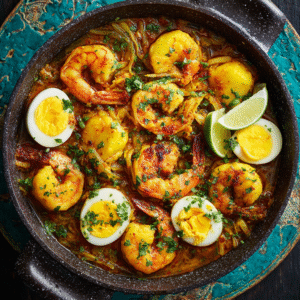
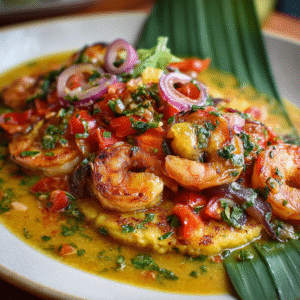
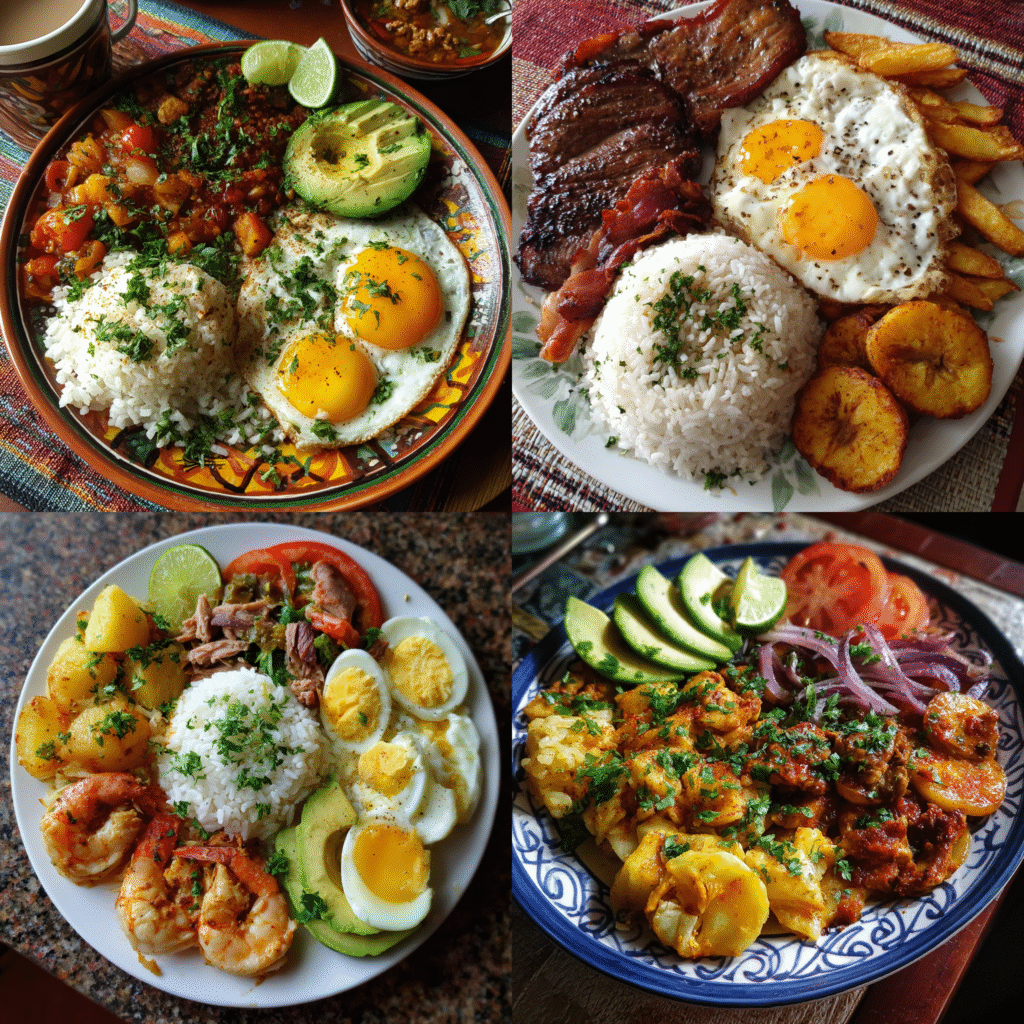
best recipe